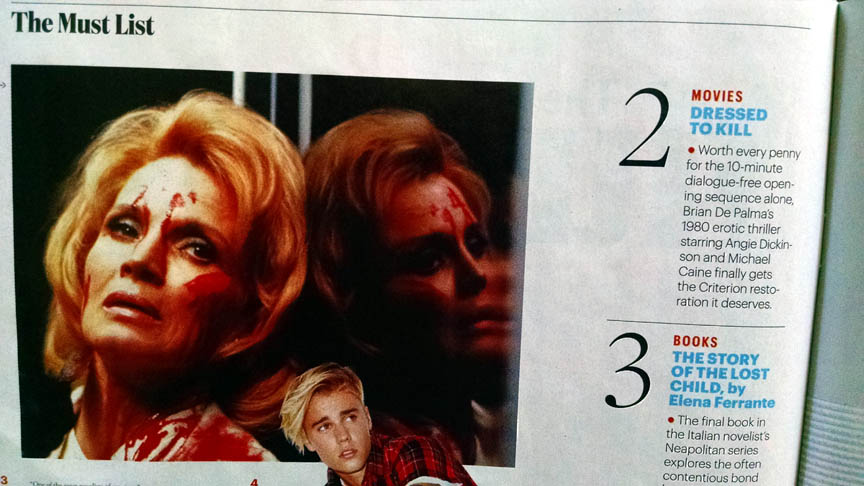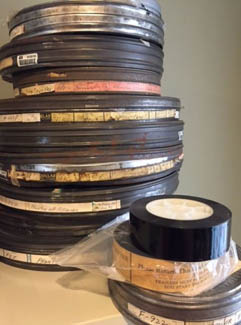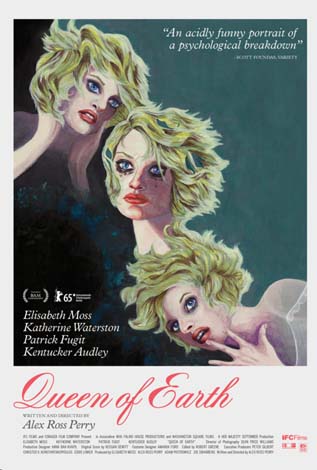CRITERION EDITION IS RELEASED TODAY; 'DE PALMA' DOC IN VENICE TOMORROW

Above is a snapshot from this week's paper edition of Entertainment Weekly (September 11 2015 issue). Criterion today released Brian De Palma's Dressed To Kill, with some nice special features (as widely discussed over the past few weeks), and tomorrow is the world premiere of Noah Baumbach and Jake Paltrow's documentary, De Palma, at the Venice Film Festival. De Palma will also be honored in a special event prior to tomorrow's screening in Venice. But today, it's (almost) all about Dressed To Kill. Here are two very nice links from today, with more to come as I have time in the next couple of days:
Wall Street Journal Blog - Nancy Allen interviewed by Michael Calia
"I think what I gleaned from that was it’s one thing when you shoot a movie on a soundstage. It’s very controlled and easy. You have to — and I don’t know if you’ve been on a soundstage before — but there’s just no energy there, and so you’re constantly having to create and recreate some sort of energy to make something come to life. New York is a rather energetic city, so there’s immediately that hum that’s under everything you do that really energizes, particularly when you’re running around and it’s a thriller. The city already has that kind of energy: fast-paced, on the go, running around. It really helped to energize the work, I think, and the intensity of what we were doing."
"At the apex of Dressed to Kill is a transsexual serial killer, a dubiously designed villain whose provocative shock value has been drained, replaced by the judgmental disdain inherent in modern conversations concerning politically correct depictions of the Trans community.
"There’s no escaping the archaic depiction of the psychotic Bobbi, even though De Palma clearly took pains to avoid the virulence of homophobia, with macho cop Dennis Franz reduced to the epithet of ‘weirdo’ in his tacky verbalizations. Much like the closing psychologist’s commentary explaining Norman Bates’ mental afflictions in Psycho, we are treated to a similar sequence here as Nancy Allen lays down Transsexuality 101 for Keith Gordon at a fancy restaurant while old biddies listen on in horror directly behind them. But De Palma’s film isn’t aiming for cheap thrills, and Dressed to Kill is actually a much more significantly complex film than the particular Hitchcock title providing nuggets of inspiration.
"De Palma’s tale is an allegory concerning the reconciliation of sexuality with social expectation in a masculine, patriarchal system (reinforced by favored De Palma visual motifs like mirrors, and frequent use of doubling subjects). Clearly, the Bobbi/Dr. Elliott figure is a tortured soul, presented in a rudimentary portrait of battling gender roles a la multiple personality disorder (Bobbi’s voice mail messages eerily resemble those of Dee Wallace’s werewolf stalker in 1981’s The Howling, a similarity of genre tropes equating the notion of gender identity with the ‘trans-species’ underpinning of lycanthropy). But he’s stuck between two much more interesting characters, typified on opposing ends of the feminine spectrum—the mother and the whore.
"Dickinson’s privileged Manhattan housewife, decked out in a puff of blonde hair and completely white wardrobe, is shown pleasuring herself in the shower as her husband ignores her, idly glancing at her in the mirror as he shaves. The neglect of her sexual fulfillment gives way to a fantasy rape sequence, while shortly afterwards we see her husband hunched over her as she overreacts to his inattentive thrusts. Then, there’s Allen’s streetwise prostitute, Liz, arguably the most well-adjusted and well-developed characterization here. Having ownership over her body, clearly using it as a site of commerce on her own terms, she’s comparatively the only sex-positive component. De Palma book-ends the film with Liz’s shower sequence and it suggests something much more insidious. The traumatic experiences of the narrative have tainted her, and her shower sequence ends with the threat of violence previously absent from her sexual dynamic.
"The scenario, and several famous sequences, conveys the navigation of these sexual dynamics within the context of social spaces. Perhaps the most famous instance is a nine minute segment, completely free of dialogue, where Angie Dickinson is shown to be in a museum gazing at the humans passing by her as she continues the banalities of her own existence writing out her grocery list. Of course, she’s interrupted by the dark stranger, and we watch her deliberate her moves in a series of negotiations as complex as chess game. She balks at his initial touch in the museum, leading to a meaningful exchange of her white gloves (what happens with the thrown away glove outside the museum is as important as the one used as bait to get her into a taxi). These ‘pieces’ signifying her white privilege are like symbols from Greek mythology—an aerial shot finds her gliding diagonally down the steps of the museum, a descent bringing her down from the loft of culture into the base, primal desires engaged in within the taxi, one of several contained moving spaces haunted by the specter of sex and violence (the other being a subway sequence with Allen).
"Sexual pleasure and fulfillment outside of one’s assigned role or expectation equals death, and De Palma pumps Dickinson through the shame of venereal disease before providing another clue to her fallen status. Forgetting her ring in the stranger’s bedroom, she takes the elevator back up, only to be greeted by the enraged killer stalking her. The attempt to reclaim her ring, and ascend back into the ranks of her privilege is what seals her fate. Dressed to Kill is about the danger and fear associated in these acts of ‘de-motion.’ De Palma explores this further, not only as the perceived downgrading of the sex-change from male to female but also Caine’s occupational signifiers—as a man he’s a doctor, but a significant sequence finds his female persona donning the uniform of a nurse, hinting at the rippling effect of such a ‘reduction.’"




 This past July,
This past July, 

 This past February, after Queen Of Earth screened at the Berlin Film Festival,
This past February, after Queen Of Earth screened at the Berlin Film Festival, 



